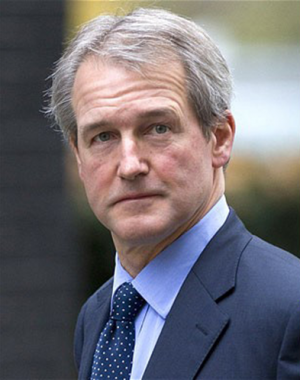News
Latest Lion Aid News
Badger culls : Government intransigence, reasonable farmers
Friday 19th April 2013
|
Damn the torpedoes, full speed ahead On April 17 we attended a very interesting meeting of the All-Party Parliamentary Group on Conservation and Wildlife to discuss the issue of badger culling and bovine tuberculosis. The panel consisted of Adam Quinney (Vice President, National Farmers Union), Sir Jim Paice MP and former farming Minister, Simon King (President, Wildlife Trusts) and Dr. Brian May (Team Badger). The meeting was chaired by Angela Smith MP. Additional information to the Group was provided by LionAid, interpreting recent results of molecular genetic epidemiology studies based on whole genome sequencing. This information showed that the epidemiology of the disease was not well understood, that the role of badgers in bTB transmission to cattle was not clear, and that maintenance of bTB in cattle could well involve latent infections, persistence of the pathogen in soil for many years and cattle to cattle transmission despite existing movement controls. Discussion centred on the questionable need of a badger cull given scientific uncertainty of outcomes and the possibility of exacerbating bTB outbreaks, the decision by Government to proceed with the upcoming culling test, the issue of whether the vote in Parliament on October 25, 2012 (147 against further culling, 28 for) could be ignored by Government and whether Parliament was sovereign in the case of the badger cull, the possibility and efficacy of vaccination, and the risks involved by Government pushing through badger culling against the will of Parliament and the voting public. It was confirmed by Sir Jim Paice that the planned cull in June was purely an exercise to determine whether 70% of badgers could be exterminated from test regions by shooting them at night. This culling therefore has nothing to do with bTB control per se, it is only to determine the efficiency and cost-effectiveness of eliminating badgers. It was not clear how the 70% benchmark could be reached given uncertainty of badger numbers before the cull, the strong possibility that badgers will escape the kill zones and increasing wariness of badgers surviving initial attempts. After the meeting we had a brief but very informative discussion with Mr Quinney who made an excellent presentation at the meeting and was at all times careful, reasonable and receptive of new information. There have been endeavours in the past to polarize the issue of badger culling with farmers on one side and conservationists on the other but this is overly simplistic. We pointed out to Mr Quinney that British farmers have been living together with wildlife for millennia and are indeed contributing to conservation of wild animals that live on their land. He accepted this and pointed out that the goal for the farmers was to control bovine tuberculosis in the most efficient way. He was very receptive to use of best scientific information to prevent a waste of time and money in pursuit of techniques with questionable effectiveness. He admitted that there were considerable problems with currently administered antibody tests among cattle – it is possible that animals in the early stages of infection will test negative, that the test did not work well among older animals, and that testing should be more frequent in outbreak areas. False negative tests could well be a source of bTB in herds when infectious cattle had been transported. Mr Quinney was fully cognizant that bTB can persist in the soil for long periods of time. We discussed with him that the reason why bTB is relatively rare in northern regions of the UK could be more related to longer and colder winter conditions hostile to survival of the pathogen outside the host, rather than any connection with resident badger populations. (see Point Three below). He did not believe deer were much involved in UK bTB transmission to cattle as there is little opportunity for deer (browsers) to infect cattle (grazers), but accepted that the epidemiology of bTB could be much more complicated than is currently believed. We have asked for a further meeting with Mr Quinney as we believe that farmers are ready to be part of solutions that reduce incidence of bTB in cattle and that do not necessarily involve blind adherence to Government plans to cull badgers. Government must not believe they can force such measures down the throats of farmers, Parliament and the general public based on unjustifiable “scientific” evidence. Sir Jim Paice stated at the meeting that the vote in Parliament was non-binding, that Government from time to time must make unpopular decisions “for the greater good” and that the Government does not have to be swayed by popular opinion. An increasingly better-informed public will not accept slaughter of wildlife as what seems to be an increasingly desperate attempt by Government to “take action” despite all those urging caution. Ministers should hesitate to emulate Admiral David Farragut in the battle of Mobile Bay almost 150 years ago who issued the paraphrased order “Damn the torpedoes, full speed ahead!” Farragut was promoted but Ministers with that approach are likely to be sacked. Before we end, a few more things to consider about bTB epidemiology.
Given such complexities, what possible reason can there be to continue to tout badger culling as the silver bullet for bTB control? Picture credit: http://kaylaente.files.wordpress.com/2012/09/owen-paterson_2077475b2.jpg
Tags: Btb, Bovine Tuberculosis, UK, Badger culls, badgers, epidemiology, Categories: Wildlife Diseases |
Add a comment | Posted by Pieter Kat at 17:36




